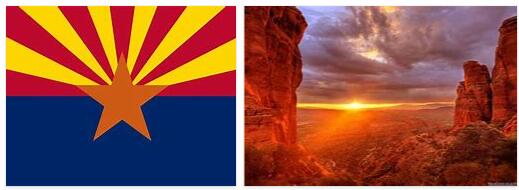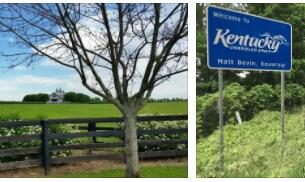Arizona economy and infrastructure
According to a2zcamerablog, agriculture plays an important role economically in Arizona. The state has the largest farms in the USA on which cattle are kept. Sometimes you can also work on these farms as part of Work & Travel. In addition, citrus fruits, cereals, cotton and winter vegetables are grown in irrigation crops. In addition, the extraction of copper, coal and oil, fine electronics and of course tourism are important. Copper, called “Copper” in English, was named the official “state metal” of Az in 2015.
Viticulture is particularly important in the southeastern part of the state and has a long history in Arizona. Because it was the Spanish missionaries who planted numerous vineyards a few hundred years ago to produce the grapes for their mass wine.
The unemployment rate in Arizona was 5.0 percent in 2019 and the gross domestic product in 2016 was $ 267.472 billion. All in all, Arizona is one of the poorer states in the United States.
The infrastructure in Arizona is good. In addition to a well-developed road network, a route network of 2,700 kilometers is available across nine railway companies. Major east-west routes through the state are operated by BNSF Railway and Union Pacific. There is an intercontinental airport with the Sky Harbor International Airport in Phoenix. The airport has a passenger volume of around 40 million passengers a year. Another international airport can also be found in Tucson.
Arizona and Politics
In the presidential election, Arizona is considered a Republican-dominated state. From 1952, with the exception of the 1996 election, the votes always went to the Republicans. In the last election, Donald Trump had a lead of 3.54 percent. The governor has been Republican Doug Ducey since 2015, and Democrat Kyrsten Simena and Republican Martha McSally currently sit in the Arizona Senate. The now deceased Republican John McCain came from Arizona.
Arizona has one of the loosest gun laws in the United States. Every second adult has at least one firearm. What appears to outsiders as the “Wild West” in its purest form is normal for the people here. Even the children learn how to handle weapons here. As far as gun laws are concerned, Arizona is administratively an “open carry state”, which means that anyone who has a license can openly carry a gun with them.
History of Arizona
The first Indians reached Arizona as early as the Neolithic between 16,000 and 10,000 BC. Until the 12th century, the Hohokam culture was inhabited by the Hohokam Indians between 300 and 1200 before colonization. The first European in the area was Álvar Núñez Cabeza de Vaca in the 16th century, more precisely in 1535. It was followed in 1539 by the Spanish Franciscan Marcos de Niza. The falsified reports by Franciscan Marcos de Niza are the source for the legend of the “Seven Golden Cities of Cibola”.
Colonization was then carried out by Catholic-Spanish missionaries who wanted to convert the Indians of the tribes living there to the Catholic faith. The missionaries of the Catholic Church who promoted colonization belonged for the most part to the Jesuits who were supposed to convert Indians to the Christian faith in the northern provinces of Mexico at that time and to educate them to be Christian workers. However, with limited success. Nonetheless, missionaries often managed to turn their missions into prosperous businesses. With the Indians of the tribes living there as cheap labor. Some of these missionaries’ sites can still be visited today. For example the Mission San Xavier del Bac.
It was also the Spaniards who founded the first fortified cities, Tubac and Tucson. Tubac was founded by Spain in 1752 as the fortress Presidio San Ignacio de Tubac and was the first colonial garrison in present-day Arizona.
From 1821 Arizona belonged completely to Mexico and had to be ceded to the USA in 1848 after the Mexican-American War. All areas north of the Gila River went to the United States for an amount of 15 million dollars. The area north of the Gila River extended in addition to Arizona at that time over the present-day states of California, Nevada, Utah, western Colorado and southwest Wyoming. In 1853, with the Gadsden purchase, another area in the south of the Gila River of Mexico was acquired. On February 28, 1859, the first Indian reservation was established in the Arizona Territory with the Gila River Indian Reservation.
Grand Canyon State has been a US state since February 14, 1912, so only since the 20th century. When refrigeration and air conditioning systems became widely available after the Second World War, Arizona experienced a real boom and Phoenix in particular became one of the fastest growing cities in America. Today Arizona is the sixth largest state in the United States of America by area. The Spanish-Mexican influence is still omnipresent today.



